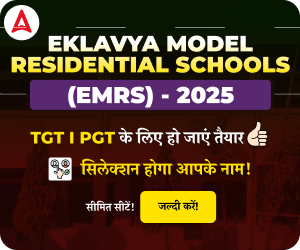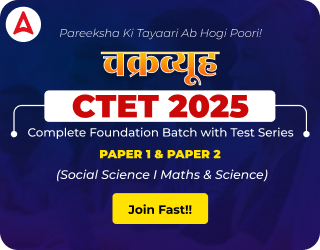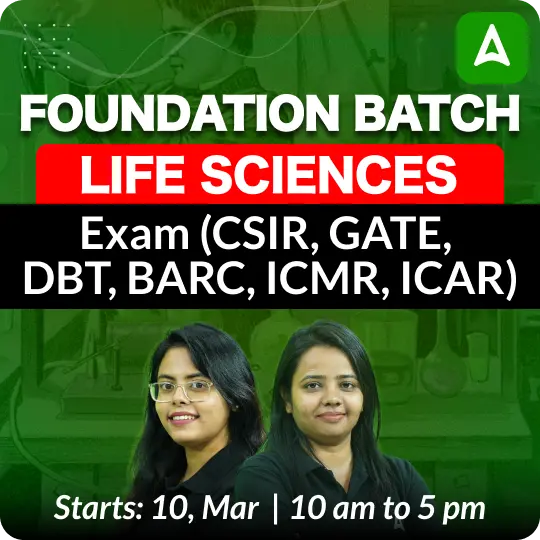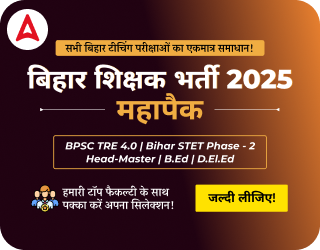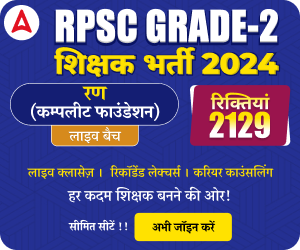Table of Contents
UP PGT Chemistry Syllabus 2025 has been released by the Uttar Pradesh Secondary Education Services Selection Board (UPSESSB) on their website. Candidates must go through the syllabus for UP PGT Chemistry to know the nuances of the exam pattern, topics, subjects, marks distribution, marking scheme and other related information. For more information on the Uttar Pradesh PGT Chemistry Syllabus 2025, read following article.
UP PGT Chemistry Syllabus 2025
The UP PGT Chemistry Syllabus 2025 covers essential topics such as Physical Chemistry, Organic Chemistry, Inorganic Chemistry, and Analytical Chemistry, ensuring a thorough understanding of fundamental and advanced concepts. The exam pattern consists of 125 multiple-choice questions (MCQs), carrying a total of 425 marks, with each question worth 3.4 marks and a time duration of 2 hours. There is no negative marking in the UP PGT exam 2025. A well-structured syllabus helps aspirants strategically prepare by focusing on key topics, managing time efficiently, and improving accuracy, ultimately boosting their chances of success in the UP PGT Chemistry Exam 2025.
UP PGT Chemistry Exam Pattern 2025
The UPSESSB UP TGT PGT Exam Pattern 2025 consists of 125 multiple-choice questions (MCQs) for both the TGT and PGT exams, conducted in offline mode (paper-pen based). The TGT exam carries 500 marks, with each question worth 4 marks, while the PGT exam carries 425 marks, with each question valued at 3.4 marks. Both exams have a time duration of 2 hours, and there is no negative marking. These exams are held for the recruitment of Trained Graduate Teachers (TGT) and Post Graduate Teachers (PGT) in schools across Uttar Pradesh.
| UP TGT PGT Exam Pattern 2025 | |
| Details | PGT Posts |
| No. of Questions | 125 Questions |
| Time Duration | 2 hours |
| Marks | 425 |
| Negative Marking | No |
| Each Question | 3.4 marks |
| Type of Questions | MCQ |
UP PGT Chemistry Marks Distribution 2025
The UP TGT PGT Marks Weightage 2025 outlines the selection criteria for both posts. For the PGT post, the written exam carries 425 marks (85% weightage), the interview is worth 50 marks (10%), and special qualifications add 25 marks (5%), making a total of 500 marks. In contrast, the TGT post selection is based solely on the written exam, which carries 500 marks (100% weightage), with no interview or additional marks for qualifications. This structure highlights the importance of the written exam in both posts while giving PGT candidates an extra edge for higher qualifications.
| UP PGT Marks Weightage 2025 | |||||
| S.No. | Exam | For PGT Post | For TGT Post | ||
| Marks | Percentage | Marks | Percentage | ||
| 1 | Written Exam | 425 | 85 | 500 | 100 |
| 2 | Interview | 50 | 10 | ||
| 3 | Special Qualification | 25 | 5 | – | – |
| Total | 500 | 100 | 500 | 100 | |
UP PGT Chemistry Syllabus 2025 Detailed
The UP PGT Chemistry Syllabus 2025 covers key topics from Physical, Inorganic, and Organic Chemistry, aligning with advanced concepts in the subject. It includes gaseous, liquid, and solid states, thermodynamics, chemical kinetics, electrochemistry, and molecular structure in Physical Chemistry. Inorganic Chemistry focuses on atomic structure, periodic classification, coordination compounds, transition metals, lanthanides, and actinides. Organic Chemistry covers reaction mechanisms, stereochemistry, biomolecules, and advanced synthetic methodologies. The syllabus is designed to assess conceptual clarity and application-based knowledge, making it essential for candidates preparing for the UP PGT Chemistry exam.
(A) Physical Chemistry:
- Gaseous State: Kinetic molecular theory of gases, Derivation of kinetic equation and verification of gas laws, Description of molecular velocities, Heat capacity of gases, Energy distribution law, Molecular collisions and transport phenomena, Mean free path and collision diameter, Non-ideal gases: van der Waals equation and other state equations, Law of corresponding states and Liquefaction of gases
- Liquid State: Intermolecular forces in liquids, Vapour pressure of liquids and its temperature dependence and Surface tension and viscosity of liquids and their temperature effects
- Solid State: Crystals: shape and symmetry, Space lattice and unit cell, Miller indices, Various crystal systems, Bragg’s equation, Crystal structure of sodium chloride, Packing of atoms in cubic systems and Bonding in solids and crystal defects
- Colloidal State: Lyophilic and lyophobic colloids, Formation and properties of colloids, Charge generation on colloidal particles, Coagulation and protection of colloids and Applications of colloids (aerosols, foams, emulsions)
- Molecular Structure: Dipole moment and molecular structure determination, Infrared and Raman spectroscopy and their application in molecular structure determination and Nuclear Magnetic Resonance (NMR) and Electron Spin Resonance (ESR) spectroscopy and their applications
- Thermodynamics and Thermochemistry: Zeroth and First Law of Thermodynamics, Enthalpy and internal energy, Applications of the First Law of Thermodynamics, Work done by an ideal gas in isothermal and adiabatic expansions, Joule-Thomson coefficient, Reaction enthalpies (combustion, formation, neutralization, phase change, and sublimation), Hess’s Law and its applications and Bond energy
- Second Law of Thermodynamics: Carnot cycle, Entropy and its physical concept and Entropy changes in reversible and irreversible processes
- Free Energy (Gibbs and Helmholtz): Maxwell’s relations, Partial molar quantities (chemical potential), Gibbs-Duhem relation and Clausius-Clapeyron equation and Gibbs-Helmholtz equation
- Molecular Thermodynamics: Partition function and its importance, Relationship between partition function and thermodynamic properties and Translational, rotational, vibrational, and electronic partition functions of ideal gases
- Surface Chemistry: Physical and chemical adsorption, Langmuir adsorption isotherm and BET equation and its applications
- Photochemistry: Primary and secondary processes, Einstein’s law of photochemical equivalence, Phosphorescence and fluorescence, Photochemical decomposition of hydrogen iodide and Chemical lasers
- Catalysis: Homogeneous and heterogeneous catalysis, Theory of heterogeneous catalysis and Enzyme catalysis
- Solutions: Ideal and non-ideal solutions, Raoult’s Law, Colligative properties (osmotic pressure, vapor pressure lowering, boiling point elevation, freezing point depression) and Determination of molecular weight from colligative properties
- Nuclear Chemistry: Fundamental particles and their classification, Nuclear forces, Liquid drop and shell models of atomic nuclei, Nuclear stability, Energy changes in nuclear reactions, Concept of nuclear cross-section and Nuclear fission, spallation, and fusion reactions
- Chemical Kinetics: Order and molecularity of reactions, Rate laws for first and second-order reactions, Temperature dependence of rate constants (Arrhenius equation), Methods for determining reaction order and Transition state theory
- Chemical Equilibrium: Relationship between Kp and Kc, Decomposition of phosphorus pentachloride, Formation of HI and NH3, Decomposition of CaCO3 and NH4HS and Le Chatelier’s principle and its applications
- Electrochemistry: Electrical conductivity, Arrhenius theory of electrolytic dissociation, Ostwald’s dilution law, Theory of strong electrolytes, Debye-Hückel-Onsager equation, Determination of conductance and its applications, Kohlrausch’s law of independent migration of ions, Electrochemical cells, Nernst equation and standard electrode potentials, Measurement of EMF and its applications, Fuel cells, Ionic equilibria (solubility product, hydrolysis of salts, pH, buffer solutions, acid-base indicators)
(B) Inorganic Chemistry:
- Atomic Structure: Wave-particle duality, Heisenberg uncertainty principle, Schrödinger wave equation, Atomic orbitals, Quantum numbers, Shapes of s, p, and d orbitals, Aufbau principle, Pauli’s exclusion principle, Hund’s rule, Electronic configuration of elements and Periodic table and periodic properties (atomic and ionic radii, ionization energy, electron affinity, electronegativity)
- Chemical Bonding: Ionic bonding (lattice energy, Born-Haber cycle, salvation energy), Covalent bonding (hybridization, molecular orbital theory) and VSEPR theory and molecular shapes of NH3, H3O+, SF6, and IF7
- s-Block Elements: General characteristics, Chemistry of lithium and beryllium, Diagonal relationships
- p-Block Elements: General properties, Oxides and oxyacids of nitrogen, phosphorus, and sulfur, Phosphazenes, silicates, and silicones and Diboranes, interhalogens, and polyhalides
- d-Block Elements: Characteristics of 3d, 4d, and 5d transition metals, Coordination compounds (Werner’s theory, IUPAC nomenclature, isomerism, metal-ligand bonding), Crystal field theory (crystal field splitting in tetrahedral and octahedral complexes, CFSE, magnetism) and Electronic spectra of transition metal complexes
- Lanthanides and Actinides: Electronic configuration, Oxidation states, Separation techniques, and Magnetic and spectroscopic properties
- Bioinorganic Chemistry: Role of alkali and alkaline earth metal ions in biological systems and Metal porphyrins (hemoglobin and myoglobin)
(C) Organic Chemistry:
- General Organic Chemistry: Orbital representation of methane, ethane, ethene, ethyne, and benzene, Polarization of bonds (inductive, resonance, and steric effects), Acidity and basicity of organic compounds, Nucleophilic and electrophilic substitutions, additions, and eliminations and Isomerism (structural and stereoisomerism)
- Important Functional Groups: Alkyl halides, alcohols, aldehydes, ketones, carboxylic acids, and their derivatives, Preparation and reactions of Grignard reagents and Keto-enol tautomerism
- Carbohydrates: Classification and Ring structure and mutarotation of glucose and fructose
- Aromatic Compounds: General methods of preparation and Electrophilic substitution reactions (nitration, halogenation, sulfonation, Friedel-Crafts reactions)
UP PGT Chemistry Syllabus 2025 PDF
Candidates can refer to the table below to download the UP PGT Chemistry Syllabus PDF. Going through the syllabus before beginning their preparation will help them understand the important topics and structure their study plan efficiently. Regularly revisiting the syllabus throughout their preparation will ensure they stay focused and fine-tune their strategy for better performance.
| UP PGT Chemistry Syllabus PDF | |
| UP PGT Chemistry Syllabus | Download PDF Now |
| UP TGT PGT 2025 Important Links | |
| UP TGT PGT Notification 2025 | UP TGT PGT Syllabus 2025 |
| UP TGT PGT Previous Year Question Papers | UP TGT PGT Eligibility Criteria 2025 |

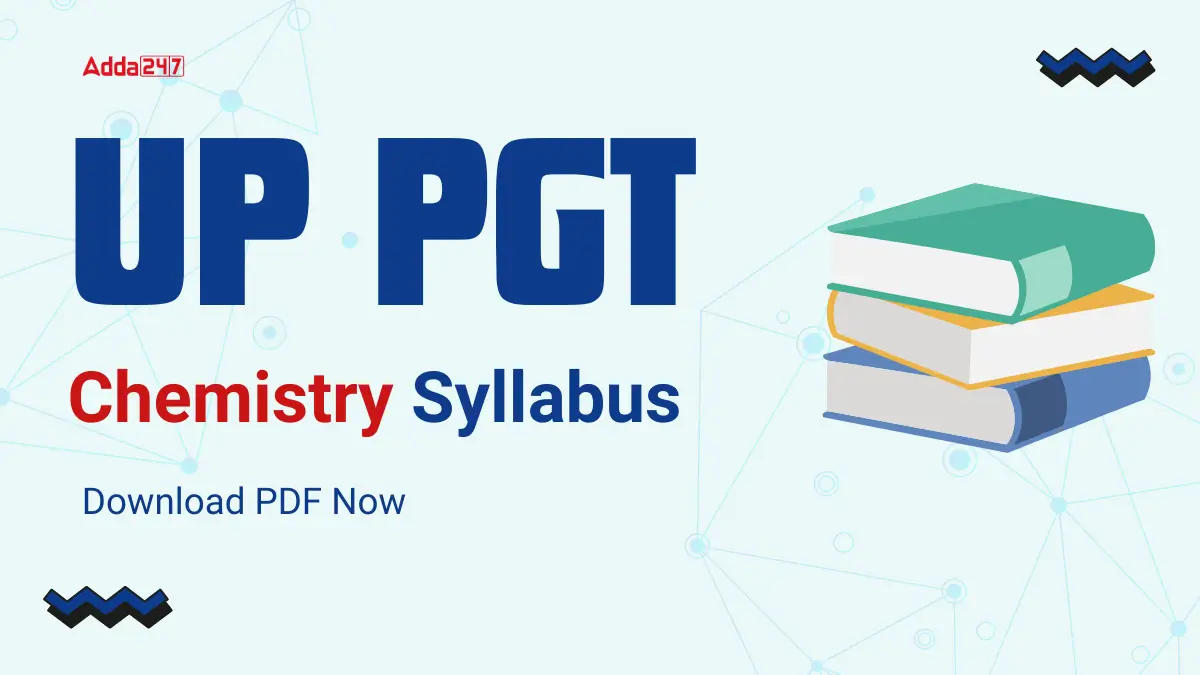


 KARTET Syllabus 2025, Download Paper 1 a...
KARTET Syllabus 2025, Download Paper 1 a...
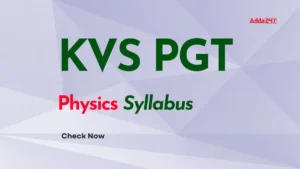 KVS PGT Physics Syllabus 2025 and Exam P...
KVS PGT Physics Syllabus 2025 and Exam P...
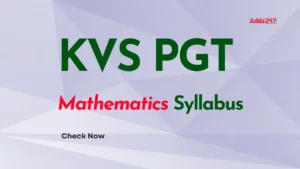 KVS PGT Mathematics Syllabus 2025 and Ex...
KVS PGT Mathematics Syllabus 2025 and Ex...
